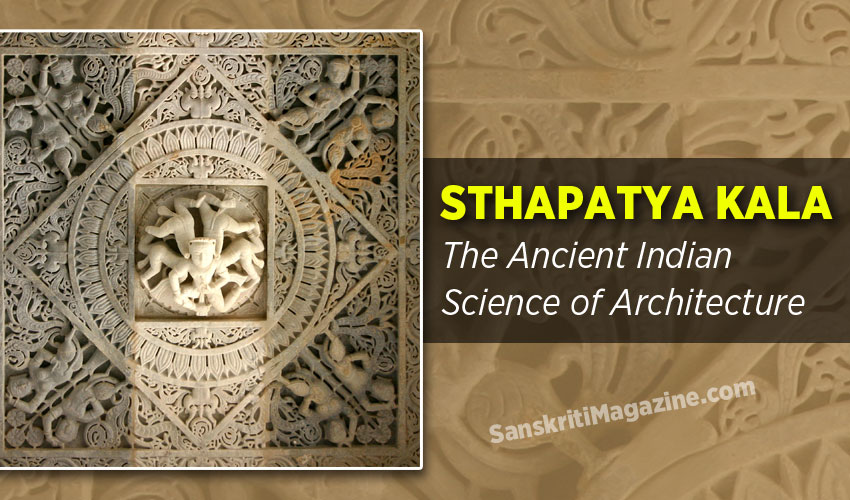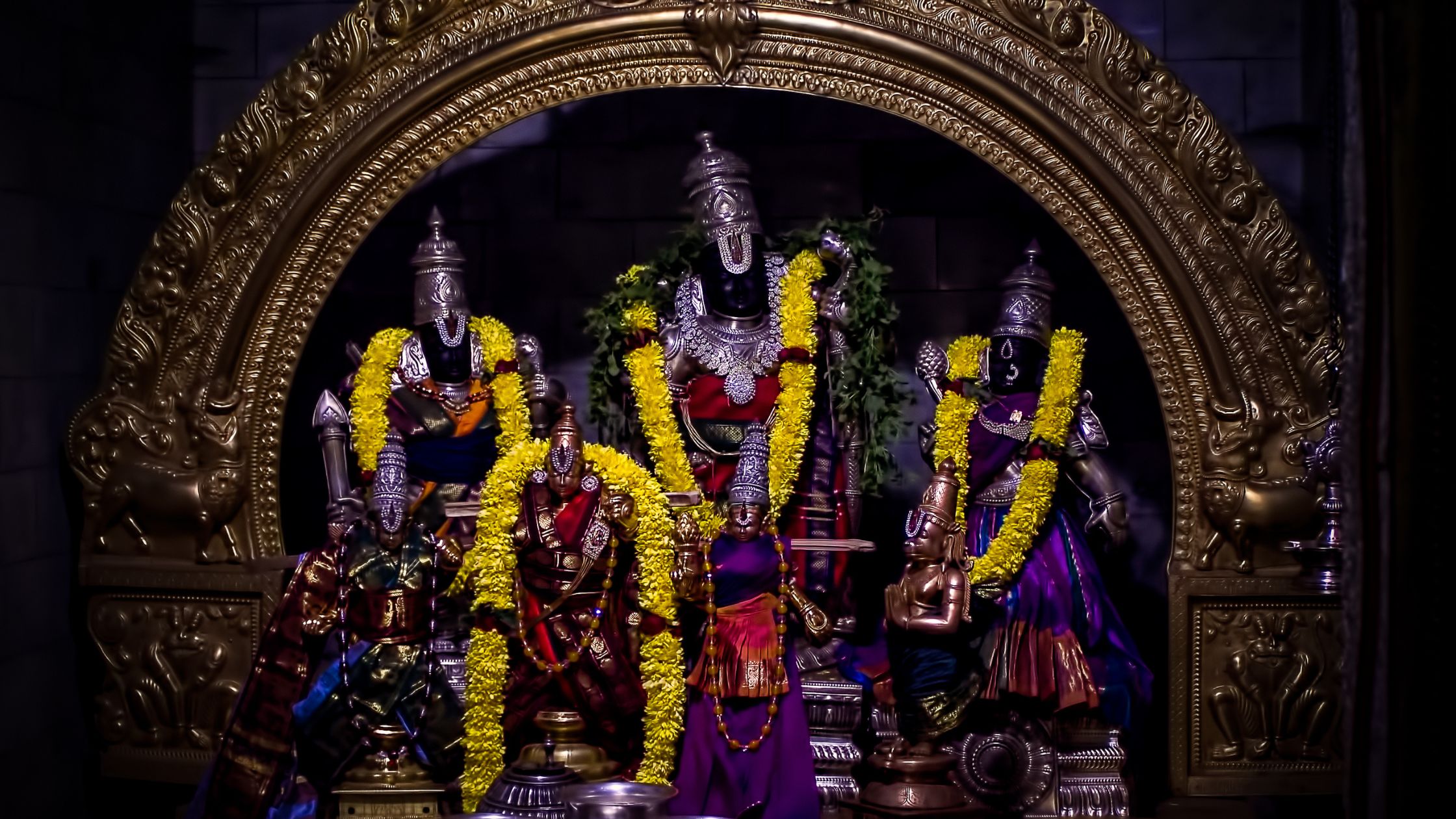The Science of Architecture and Civil Construction was known in Ancient India as Sthapatya-Shastra. The word Sthapatya is derived from the root word Sthapana i.e. ‘to establish’. The technique of architecture was both a science and an art, hence it is also known as Sthapatya-kala, the word Kala means an art.
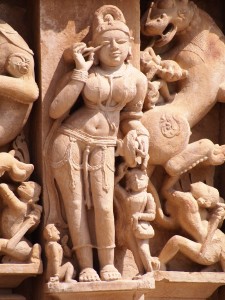 From very early times the construction of temples, palaces, rest houses and other civil construction was undertaken by professional architects known as Sthapati. Even during the Vedic times, there existed professionals who specialized in the technique of constructing chariots and other heavy instruments of war. These professionals have been referred to in the Rig Veda as Rathakara which literally means ‘chariot maker’.
From very early times the construction of temples, palaces, rest houses and other civil construction was undertaken by professional architects known as Sthapati. Even during the Vedic times, there existed professionals who specialized in the technique of constructing chariots and other heavy instruments of war. These professionals have been referred to in the Rig Veda as Rathakara which literally means ‘chariot maker’.
The excavations of the ruins at Mohenjodaro and Harappa (today in Pakistan) proved the existence of a developed Urban civilization in India. The Indus valley civilization is dated around 3000 B.C. Thus since the last 5000 years. India has had an urban civilization. The existence of an urban civilization presumes the existence of well developed techniques of architecture and construction.
These techniques would no doubt have had been systematically stated in record books for transmitting them to the later generations as well for being used as reference media for actual construction. Unfortunately, as far as the Indus Valley civilization goes no such records have been preserved either as rock edicts, manuscripts, etc., or in folk tales and legends.
“The Indian way of life provides the vision of the natural, real way of life. We veil ourselves with unnatural masks. On the face of India are the tender expressions which carry the mark of the Creators hand. ” – George Bernard Shaw, Famous British Author
But the fact that cities on the scale of Mohenjodaro had been constructed bear testimony to the existence of a systematized and highly developed technique of architecture 5000 years ago.
But in the later ages, from about the 7th century B.C., we have both literature references as well as archaeological evidences to prove the existence of large urban civilizations in the Ganges Valley. Like in most other sciences, even remotely connected with religion, in architecture also the scientific ideas and techniques have been integrated with philosophy and theology. This was so as the majority of the large constructions were temples. As the construction of Hindu temples rarely used mortar but used a technique where the stones could be affixed to one another with the force of gravity. The technique followed in doing this was similar to the one used in the Roman Aqueducts. The exquisite carvings were engraved after the stones had been fixed in their places. Thus the carving of figurines right up to the top of a temples roof must have been a demanding task.
Such carvings are especially seen in the Gopurams i.e. roofs over the south Indian temples and on the tall doorways to the temples. The Raj-Gopurams or main roofs of such temples rise to a height of nearly 90 to 100 ft. and are fully carved with various figurines depicting gods and goddesses from the Hindu pantheon.
INDIAN ARCHITECTURAL TRADITION OVERSEAS
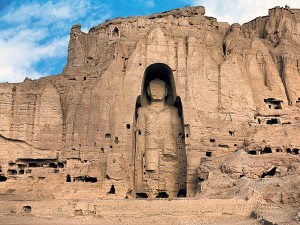 Indian techniques of art and architecture spread both westwards and eastwards. During the reign of Ashoka; Afghanistan, Baluchistan and Seistan were parts of the Mauryan empire. Buddhist Stupas were constructed in these Mauryan provinces. Unfortunately, very few of them have survived till today.
Indian techniques of art and architecture spread both westwards and eastwards. During the reign of Ashoka; Afghanistan, Baluchistan and Seistan were parts of the Mauryan empire. Buddhist Stupas were constructed in these Mauryan provinces. Unfortunately, very few of them have survived till today.
However the huge Boddhisattvas (statues of Buddha destroyed by Talibans) that were cut out of rock faces covering entire mountain faces and cliffs, had survived human and natural ravages. During Kushana times, Central Asia was a part of the Kushana empire. Indian art blended with Greek and Kushana styles, and spread into central Asia.
Thus India’s cultural frontiers at one time extended up to Balkh (referred to as Vahalika in Vedic texts) on the river Oxus (Akshu) and beyond, and played an important role in shaping the art traditions which flourished between the 1st and the 8th centuries in Central Asia.
The Gandhara school of art of Afghanistan and Central Asia was actually derived from Indian art styles. In fact even the portrait art of the Oxus region claimed by some scholars to have been an independent school is actually an extension of Indian art forms.
Besides Central Asia, the whole of Southeast Asia received most its art and architectural traditions from India. Along with Buddhism, Indian art and architecture also traveled to countries like Indonesia, Malaysia, Vietnam, Laos, Cambodia, Thailand, Burma as also to China, Korea and Japan. Sri Lanka being on our back door was heavily influenced by Indian art and architecture.
The Stupas in Sri Lanka which belong to the period between the 3rd Century B.C. to 4th century A.D. follow the Indian pattern of a hemispherical Stupa shaped like an egg and called Anda, as referred to earlier in the chapter.
The Dome of the Mosques in Islamic Architecture is derived from the Stupa
The hemispherical construction of the stupas also seems to have influenced Byzantine architecture perhaps through Pre-Islamic, Sassanian Persia. The famous Sophia mosque at Istanbul overlooking the Bosphorus Straits has domes which closely resemble the Buddhist Stupa. In fact th minarets in the mosque were erected late when the Ottoman Turks captured Istanbul (then called Constantinople) from the Byzantine Empire in the 15th century.
One can imagine that without the minarets, the mosque, which was originally a Christian Cathedral must have looked very much like a Stupa. In fact this style of architecture also influenced Islamic architecture. The dome mosques in all Muslim countries perhaps have borrowed the style of having dome from the Anda of the Buddhist Stupa. Indian influences have also felt in Europe Christian Basilicas have similarities with the Buddhist Stupas. Their mosaics seem have borrowed ideas from, the Buddhist chaityas. Indian motifs can also be traced in Gothic sculpture in the carvings in the cathedrals of Bayeux, Achen and Trier. Though this influence has been indirect and slight, its existence cannot be denied. But the more pervading influence of Indian art and architecture through Buddhism was in countries of south-east Asia.
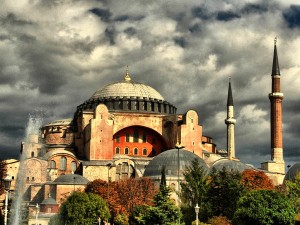 Bernard Groslier the author of the section on ‘Indochina’ in the ‘Art of the World Series’ has made the following observations about the influence of Indian Art.
Bernard Groslier the author of the section on ‘Indochina’ in the ‘Art of the World Series’ has made the following observations about the influence of Indian Art.
“It was one of the most important civilizing movements of the ancient times, worthy to compare with the Hellenization of the Mediterranean world. And India can justly be proud to have spread the light of her understanding over such distant lands, which without her might have remained in darkness”. The regions to which Bernard Groslier is referring to are the countries of south-east Asia. Many architectural and art forms in these countries display a clear Indian influence.
One instance is the famous 108 metre high statue of Buddha at Dong Duong which closely resembles the Amravati sculptures. The presence of curly hair especially, indicates Indian origin in a country where people have straight hair. In the Bali islands in Indonesia many idols of Ganesha have been found. The people of Bali call themselves Hindus.
~ Sudheer

